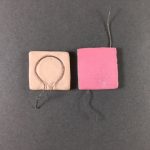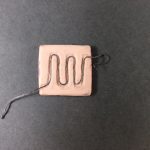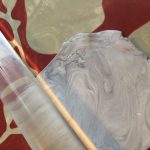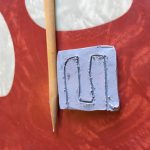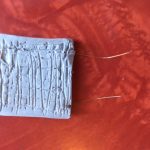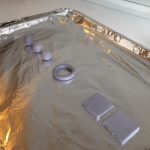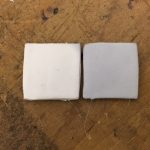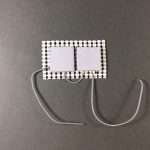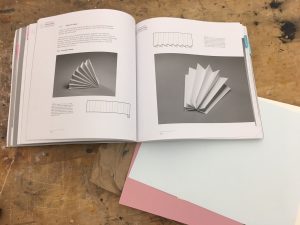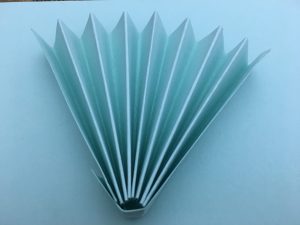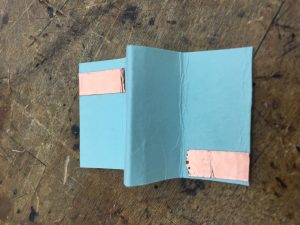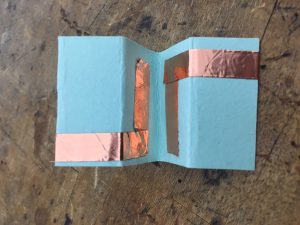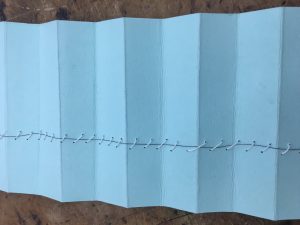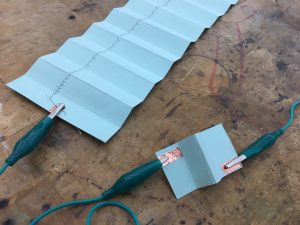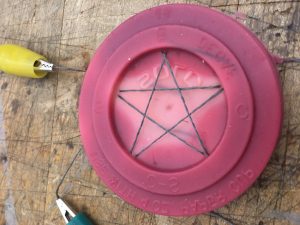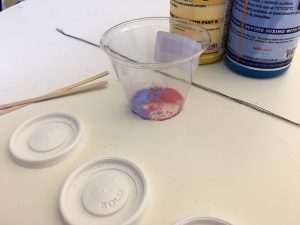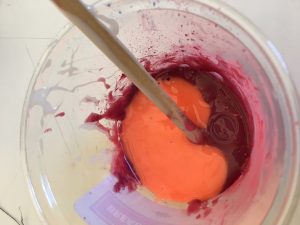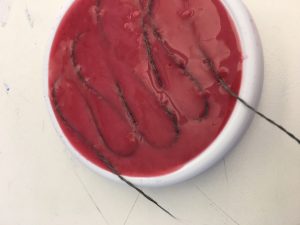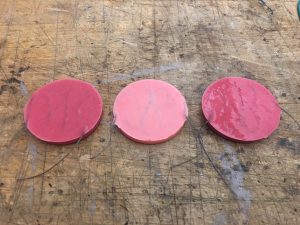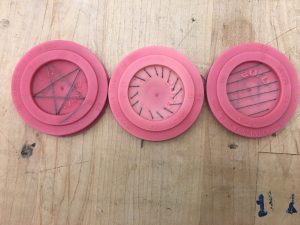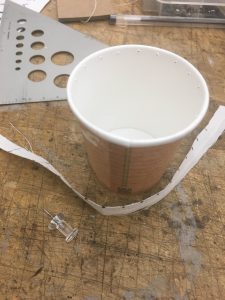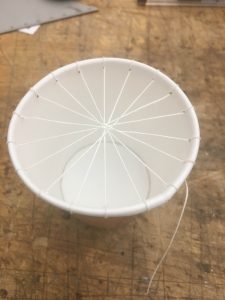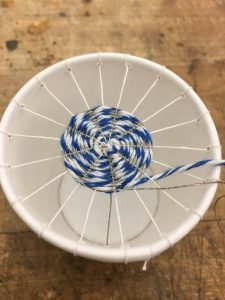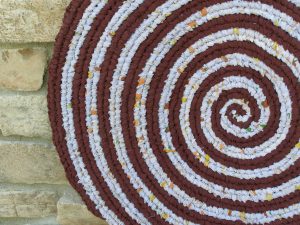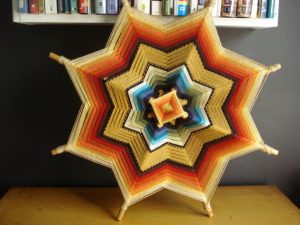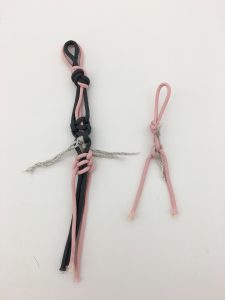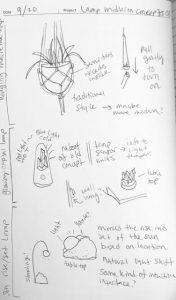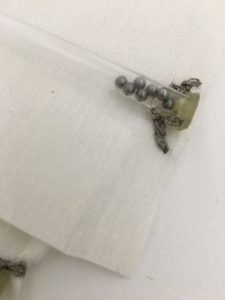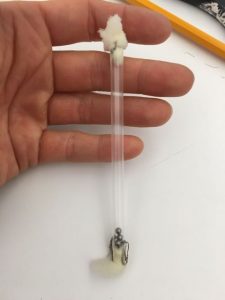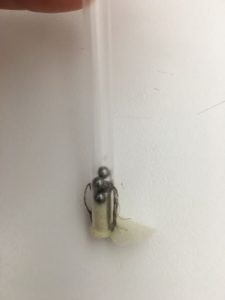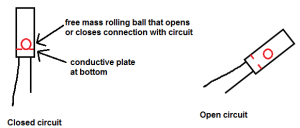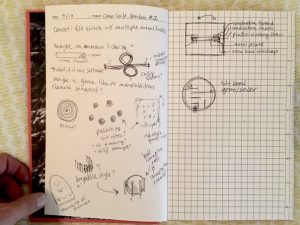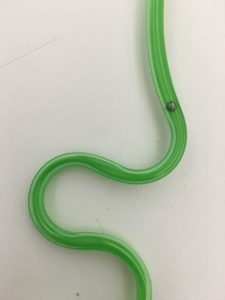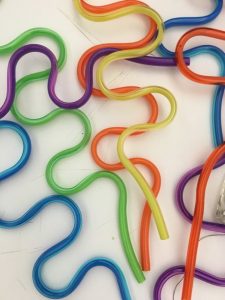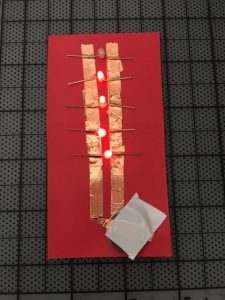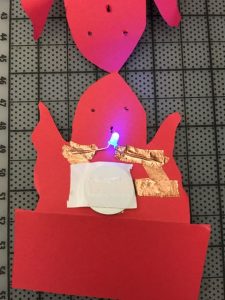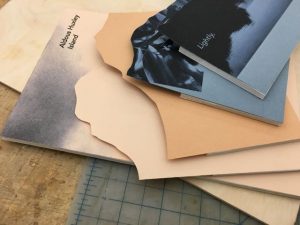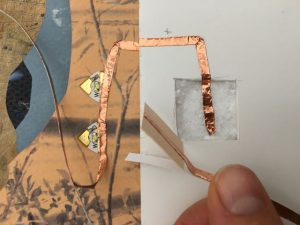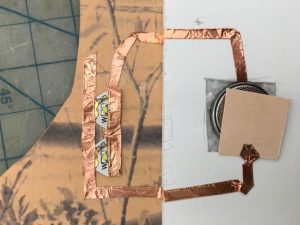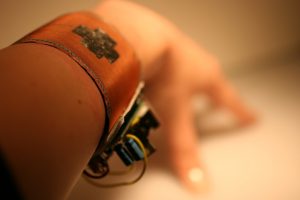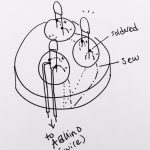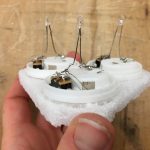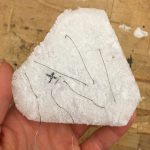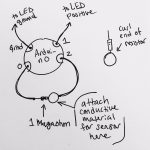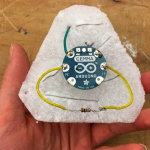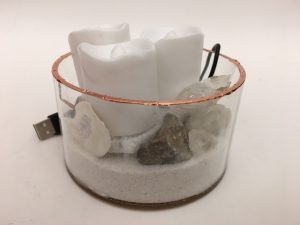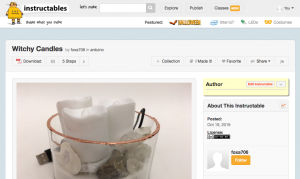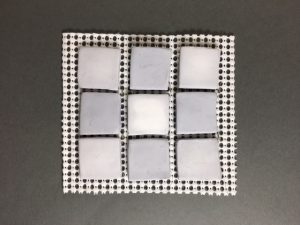
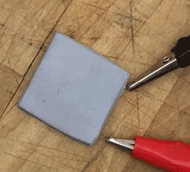
Ceramics and screenless interface relate to my thesis project. I took my final for Computational Craft as an opportunity to dig into the subject. I began with the question of how might I use thermochromic ink to display visual state changes in ceramics? Upon digging into the research I found that ceramics and thermochromic are being combined, but not for visual display purposes. While my initial inclination was to do a materials study, through the process I found in an intriguing application of my idea. My prototyping process using polymer clay acted as initial steps in my proof of the concept for this exciting materials and display opportunity: tiles as a display.
I went through a series of tests swatches through my prototyping phase. In the process, I made some interesting discoveries. Firstly, thermochromic ink can be incorporated in and survive the baking temperature of polymer clay. Secondly, one can also bake the resistive wire at this temperature. These points lead me to speculate that some very interesting jewelry or physical forms could be created using this process.
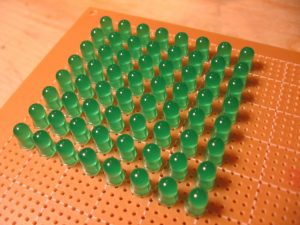
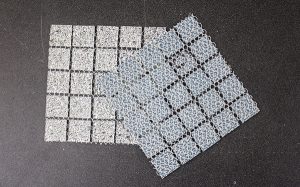
Challenges and Future Iterations
I had drawn the connection mentally between the idea of a LED matrix and of tile matrixes (as in the kind used to lay interior tiles in the home). However, I soon found that the electrical principals do not translate seamlessly between the two mediums. In my case, I used resistive wire to create the heat which changes each tile. This works well for single tiles, even in a series, but in terms of making an addressable grid of these tiles, a la LED matrix, I ran into an issue. As you know, electricity takes the path of least resistance. Consider if a tile matrix were set up in a LED matrix circuit fashion. How one would make a column of tiles change color when, considering the resistance, the electricity would stop at the first tile’s ground out? It remains unclear to me and having asked Liza as well as Adiel, the answer seems to lie is in individually addressable tile points which use a shift register with built-in MOFSET to regulate the power load. For my means, I solved this issue by treating each row of tile in my grid as a series. Sustained pulses of electricity from the Arduino and connected 9V battery built up the heat and created color change effectively. For my means, I solved this issue by treating each row of tile in my grid as a series. Sustained pulses of electricity from the Arduino and connected 9V battery built up the heat and created color change effectively. In future iterations, I plan to get my hands on a
For my means, I solved this issue by treating each row of tile in my grid as a series. Sustained pulses of electricity from the Arduino and connected 9V battery built up the heat and created color change effectively. For my means, I solved this issue by treating each row of tile in my grid as a series. Sustained pulses of electricity from the Arduino and connected 9V battery built up the heat and created color change effectively. In future iterations, I plan to get my hands on a TPIC6B595 chip and work on treating each tile effectively as a pixel. I also look forward to expanding on the materials side of this concept and working with earthenware clay.
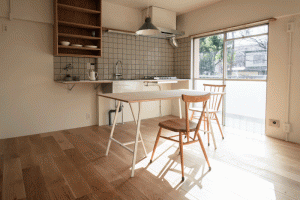
I consider this idea my intellectual property and idea I intend to further it. Therefore I have created a purpose-abstracted Instructable which you can find here.
